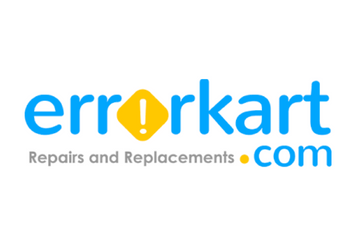Simplify Document Management for your employee - Organized and Accessible.
We can handle your employees’ documents while you focus on managing your company.
Existing User? Sign In
We can handle your employees’ documents while you focus on managing your company.
Existing User? Sign In






Document Management offers a centralized repository for storing and retrieving employee documents, simplifying the management and updating of employee information.

Storing employee documents in multiple locations or managing them manually can lead to errors and inconsistencies. In contrast, employee document management ensures data accuracy and currency by centralizing data management.

Effective file management mitigates risks such as data breaches, identity theft, and employee fraud. It ensures that confidential employee data remains accessible only to authorized personnel.

Employees value organized document management and secure handling of their confidential information, which fosters trust between employees and organization.

Effective file management saves time and reduces paperwork, allowing HR personnel to focus on more strategic tasks that can benefit the organization's overall success.

When employee documents are organized and easily accessible, HR administrators and managers can spend less time. As a result, managing data becomes easy, allowing HR to allocate more time to strategic HR initiatives, such as talent development and retention.

Quickly locate HR docs like contracts or reports in seconds.
Protect sensitive data with top-level security.
Share and edit docs with your crew effortlessly.
Kredily HRMS provides unbeatable value with the lowest cost per user in the market.



Document management is a vital component of any organization’s HR function. Transitioning to Kredily’s file management system involves the organization and upkeep of employee-related documents, including resumes, employment contracts, performance reviews, training records, and other sensitive information.
Moreover, employee file management is a capability of our HR software that offers a well-structured and centrally administered repository of employee documents spanning from the onboarding process to offboarding, along with associated pertinent information.

Document management in Kredily is a centralized, secure feature within the HRMS that streamlines the handling of all employee documents. It provides a dedicated place to store, organize, and track files from a new hire's onboarding all the way through their offboarding. By digitizing this process, it reduces manual work, improves data accuracy, and keeps sensitive files safe behind a system of role-based permissions.
The feature is seamlessly integrated into each employee's profile, making it a natural part of your HR workflow. Instead of being a separate portal, it functions as a dedicated tab within an employee's main profile, labeled "Documents." This allows HR and managers to:
Organize Documents: Store various files, such as performance reviews, in a single, unified repository.
Search and Access: Quickly locate specific files, verify uploaded documents, and track changes within the system.
Control Access: Restrict who can view or edit sensitive files, ensuring confidentiality and security.
Kredily's system is built to store a wide array of employee documents, with categories for easy management. Based on the screenshots, these include:
IDs and KYC: Employees can upload documents like their Aadhaar Card, PAN Card, and other government-issued IDs for verification.
Certifications: Records of professional courses, certifications, and academic degrees can be stored.
Work-Related Files: This category includes offer letters, employment contracts, and other documents related to the employee's tenure.
Policy Acknowledgements: Employees can sign off and acknowledge company policies, ensuring a clear record of compliance.
While both employees and HR can upload documents, the process for editing and approving them is strictly managed by a permissions-based workflow. An employee can upload personal documents like a change of address proof via their self-service portal. However, an HR administrator must then review and approve the change. To prevent unauthorized modifications, only HR administrators with a special permission level can edit a document after it has been approved and stored in the system's central repository. This ensures that the integrity of all official records is maintained and provides a clear audit trail for any changes made.
Yes, Kredily's document management system is built with security as a core principle. The platform implements several best practices to protect sensitive employee data. This comprehensive approach ensures your company's information is protected from unauthorized access and potential data breaches.
Role-Based Access Control: Access to documents is governed by a robust permissions system. This ensures that only authorized personnel with specific roles, such as HR managers or administrators, can view, edit, or delete documents. This prevents unauthorized access and maintains data confidentiality.
Data Encryption: Standard industry practices, which Kredily follows, involve encrypting data both in transit (when it's being uploaded or downloaded) and at rest (when it's stored on the server). This process secures files from being intercepted or accessed by malicious actors.
Audit Trails: The system keeps a detailed audit log of all document-related activities. This provides a clear record of who accessed, uploaded, modified, or downloaded a document, which is crucial for accountability, compliance, and investigating any suspicious activity.
Secure Authentication: The platform uses secure login methods to verify user identity, preventing unauthorized access to the HRMS and the documents stored within it.
While general file-sharing services like Google Drive or SharePoint are excellent for collaborative work, Kredily's system is fundamentally different because it is designed specifically for Human Resources. Documents in Kredily's HRMS are not just stored; they are an active part of the HR process, providing a cohesive and centralized system that streamlines all your HR functions.
Integrated with HR Workflows: Kredily's system ties documents directly to an employee's profile and key HR processes, such as onboarding, payroll, and performance management.
Specialized Features: It offers HR-specific features like structured categories (e.g., IDs, Certifications, Work) and role-based permissions tailored for HR and management.
Purpose-Built: Documents live exactly where HR professionals work, providing a more efficient and secure solution.
Yes, Kredily's HRMS streamlines the onboarding process by supporting a completely digital document workflow. This includes:
E-Signature Capabilities: New hires can fill out and digitally sign forms and contracts, speeding up the onboarding process.
Electronic Document Submission: New hires can upload their KYC documents and other required paperwork directly into the system, eliminating the need for physical copies.
Automated Verification: The system allows HR to quickly verify these documents, ensuring a smooth and efficient start for every new employee.
When an employee exits, their documents remain in your secure repository to meet legal retention requirements and support offboarding processes. The system uses role-based permissions to ensure that even after an employee exits, their documents are only accessible to authorized HR personnel. This allows your organization to maintain a secure and compliant record of all its employees while controlling access to sensitive information.
Controlled Access: Access to the former employee’s files is automatically restricted based on your defined permissions, preventing unauthorized viewing of sensitive information.
Centralized Record: All documents remain in one centralized location, simplifying future audits and reference checks.
Audit Trail: The system’s audit log tracks who accessed or viewed files, providing a transparent record of all activity, even after the employee has exited.
Yes, employees can conveniently submit their investment declarations and upload supporting tax proofs directly into the system. The "Payroll" section has a dedicated "Declaration" tab specifically for this purpose, making it a natural part of the payroll workflow.
For Employees: It simplifies the tax declaration process. Employees no longer need to submit physical copies; they can securely upload documents from anywhere, at any time, via a user-friendly portal.
For the Payroll Team: It centralizes all tax-related documents, making it easy to verify proofs and process taxes accurately. This streamlines the entire payroll workflow, saving time and reducing the risk of errors during the busy tax season.
Ensures Compliance: The digital trail of submitted documents helps the company stay compliant with tax regulations and provides a clear audit trail for any future inquiries.
A centralized document management system is crucial for maintaining compliance and preparing for audits. By keeping all files organized, controlled, and easily retrievable, the system provides a clear and verifiable audit trail. During an audit, you can quickly produce the necessary documents, which demonstrates your company's adherence to labor laws and financial regulations, helping to avoid penalties and legal issues. The system's ability to track document access and changes also adds a layer of accountability that is invaluable during a review.
Yes, you can access documents remotely or on mobile. Kredily's HRMS is a cloud-based solution, allowing authorized users to securely access documents from anywhere with an internet connection.
Real-time Access: All documents are updated in real-time, ensuring everyone works with the most current information.
Enhanced Productivity: It eliminates the need to be physically present to access files, saving time and increasing efficiency.
Disaster Recovery: All data is stored on the cloud, protecting your documents from physical damage or theft.
Convenience: Employees can upload documents from their own devices via the self-service portal, making the process simple and accessible.
Yes, the system includes both version control and an audit log. The audit log, which tracks key activities like document uploads and payroll changes, retains records for up to one month to ensure a clear trail for compliance and security purposes.
Version Control: This feature ensures everyone is working on the most up-to-date version of a file and can track changes.
Audit Log: It maintains a comprehensive record of all actions, which is crucial for accountability and security. However, this log is retained for a period of one month.
Migrating existing files into the system is a straightforward process designed to help you transition to a digital workflow.
Employee-centric Approach: The best way to start is by attaching key records to each employee profile, such as KYC documents and contracts. For bulk or historical archives, it is best to prioritize active employees and compliance-critical files first.
Dedicated Support: For large-scale or historical migrations, Kredily recommends contacting their support team for the most efficient approach.
This process ensures that your critical data is securely and efficiently moved to the new platform, preparing your company for the digital-first environment of 2025.
The system is designed to significantly increase HR productivity by automating and centralizing routine tasks. Instead of spending hours on manual paperwork, searching for files in cabinets, or updating multiple spreadsheets, your HR team can perform these actions instantly from a single dashboard. By providing quick access to all employee data—from personal info to documents and payroll records—the platform frees up HR professionals to focus on more strategic initiatives, such as talent development and employee engagement.
Kredily's system is an HRMS and payroll software focused on simplifying HR process for businesses for all size. It's different from other solutions because it's easy to use and helps you save money. While many big companies have complicated HR software, Kredily focuses on making your daily work simple and smooth.
It's Made for HR: Think of it like a toolbox for a mechanic, not a general one for everyone. Kredily connects your documents directly to HR tasks like paying salaries and hiring new people. This is different from a normal file folder where you have to find and connect everything yourself.
It's Free to Start: A big difference is Kredily's free plan. This is perfect for small businesses and startups because they can use a professional system without spending any money.
Simple to Use: The system is designed to be very easy to use. This means you and your employees won't need a lot of training, and you can start getting work done right away.